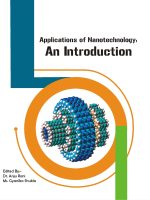Education is the right of every child because it equips him to meet the challenges of life. The children with disabilities (CWD) need this all the more, to supplement their differential talents so that they can prepare themselves for a happy productive and useful life. Efforts to educate children with disabilities began soon after independence in India. An attempt has been made to examine the policies and legislations for educating the children with disabilities in India after post- constitution era. In the final section, challenges for providing education to CWD and in that light some recommendations were made.
The report defines three groups of children with special educational needs, and advances the case that without more appropriate and responsive provisions from primary schools, many children in the above three groups will continue either not to attend or, if attending, will not succeed, may repeat and will eventually drop out. These children are marginalized by a range of difficulties including the consequences of poverty and physical or mental impairment, but also by malnutrition and ill−health before or during their school lives and what the report terms “situational disadvantage”. All these children require special help to enroll and progress in primary school.
The report provides a synthesis of current trends in primary education for children with special educational needs in selected countries in the Asia region. It identifies an international and regional shift in the definition of such children and their needs and defines the essential elements of the paradigm shift, including seven principles for a new understanding of “inclusive” universal primary education. Under each principle the report identifies policy options and current practices, including a range of ways of blending provision for children with special educational needs into the regular system.
Similar to Western countries, the early origins of special education in India started with Christian missionaries and nongovernmental agencies which stressed a charity model of serving populations such as the visually, hearing, and cognitively impaired. However after its independence from Great Britain in 1947, the Indian government became more involved in providing educational, rehabilitation, and social services.
At the top most level of the country, two central ministries namely Ministry of Social Justice and Empowernment and Ministry of Human Resource Development, Government of India a responsible for the organization and administration of the rehabilitation, care and education forrr the children with special needs(including disabled) As per the provision of the persons With Disability (PWD) Act 1995, the organizational and administrational tasks carried out by the Ministry of Social Justice and Empowernment is helped by the two bodies, namely the Central Coordinating Committee and Central Executive Committee. Ministry of Human Resource Development stands for providing meaningful measures for the education of al types of children with special needs. Further at the State level, there is also a provision of State Coordination Committee and State Executive Committee for carring out administration and organizational functions for the welfare of the disabled.
Education for all to achieve the purpose under national policy on education 1986, For this purpose the Indian assembly by through its 86th Amendment and started free and compulsory education and started Sarva Shiksha Abhiyan. Sarva Shiksha Abhiyan (S.S.A.) is a comprehensive and integrated flagship programmed of Government of India to attain universal elementary education (UEE), covering the entire country in a mission mode SSA has launched in 2001-2002 in partnership with the State Governments and local Self Governments. The programme aims to provide useful and relevant, elementary education to all children in the 6 to 14 age group by 2010. It is an initiative to universalize and improve quality of education though decentralized and context specific planning and process based time bound implementation strategy. The programme lays emphasis on Bridging all gender and social category gap at elementary education level with time bound objectives on one hand & with its own targets norms and process on the other. it is an umbrella programme covering other programmes like District Primary education Programme (DPEP), Operational Black board etc. In special education, it provides facilities for recourse teacher, itinerant teacher as well as recourse room, the suitable support according to need and allows teaching with normal child. The gigantic dimension of the programme and the financial implications calls for a meticulous planning and a rigorous appraisal.
Thus over the past four decades, India has moved gradually toward an inclusive education model. This study discusses the implementation of such a model related to the prevalence and incidence rates of disability in India as well as working within family environments that often involve three to four generations. Also included are challenges that an inclusive education system faces in India, namely, a high level of poverty, appropriate teacher preparation of special education teachers, a lack of binding national laws concerned with inclusive education, a dual governmental administration for special education services, and citizen‘s and special education professionals strong concern about whether inclusive education practices can be carried out.
Special educational practices followed by special educators of intellectually disabled children in 284 organisations were studied using a questionnaire with the domains of academic activity, behaviour problem management, therapeutics, students‘ performance, co-curricular activities and organisational activities. The 132 item based questionnaire with a five point response category was content validated and results were analysed using Means, SDs, and F test. Organisational variables such as rural-urban location did not produce any differential practice whereas number of services and human resource development activities of the organisations showed differences in non-academic domains of practice. Characteristics of special educators such as gender, experience, general education background and age showed some impact on special education practices in core areas such as academic activity, behaviour management and student performance. The findings have implications for planning for expansion of services.
Education is one of the most effective tools which Children with Special Needs could achive the social and economic empowerment. Education holds much importance for Children with Special needs as they have been a subject of discrimination for a long period of time. Even after the enactment of the different laws, like the 17 years of PWD Act 1995, 12 years of SSA and 3 years of RtE Act, the situation of education for Children with Special Needs (CWSN) are on margin. All the Govt., the organization like DPOs and the organization working under CSR in this field are just fulfilling the quorum. This study deals with the current situation of education of the CWSN in Chhattisgarh State of India. The study analyses the interpretation and implementation of inclusive education in Chhattisgarh under SSA. The greatest challenge for the State Government is the achievement of the accessibility, inclusion and empowerment of Children with Special Needs. The Goverment alone cannot accomplish this task of making the ―Right Real‖.
In India, inclusive education for children with disability has only recently been accepted in policy and in principle. In light of supportive policy and legislation, the present study argues for individual initiative on part of schools to implement programmes of inclusive education for children with mild to moderate disabilities in their elementary school classrooms. The study provides guidelines in a generalized mode that schools can follow to initiate such programmes. Also pre‐service preparation in special education has statistically significant and quantitatively substantial effects on the ability of teachers of special education courses to promote gains in achievement for students with disabilities, especially in reading. Certification in special education, an undergraduate major in special education, and the amount of special education coursework in college are all positively correlated with the performance of teachers in special education reading courses.
The guidelines were derived from an empirical study which entailed examining prevalent practices and introducing inclusion in a regular school setting. It is suggested that schools can implement inclusive education programmes if they are adequately prepared, are able to garner support of all stakeholders involved in the process and have basic resources to run the programmes. The guidelines also suggest ways in which curriculum adaptations, teaching methodology and evaluation procedures can be adapted to suit needs of children with special needs. Issues of role allocation and seeking support of parents and peers are also dealt with.
Inclusive education stands for improvement of schools in all dimensions to address the educational needs of all children. Recommendations to send children with disabilities to mainstream schools were first made in the Sargent Report in 1944, and again in 1964 by the Kothari Commission. Despite this, the change has been slow, with segregation in special schools dominating the scene until recently. There is no need of reinforcing the fact that teacher education remains a very weak link with respect to equipping teachers to be prepared for an inclusive classroom environment. The teacher education diplomas and degrees offer ―Education of children with special needs‖ as an optional subject, in order to prepare teachers to identify and diagnose disability.
However it gives them a holistic perspective with respect to dealing with diversity or challenge negative attitudes. The challenges and prospects in India are elucidated in the present study.
This book contributes importantly to the growing literature on the training of special education teachers and how it translates into classroom practice and student achievement. The authors examine the impact of pre‐service preparation and in‐service formal and informal training on the ability of teachers to promote academic achievement among students with disabilities. Using student‐level longitudinal data from Florida over a five‐year span the authors estimate “value‐added” models of student achievement. There is little support for the efficacy of in‐service professional development courses focusing on special education. However, teachers with advanced degrees are more effective in boosting the math achievement of students with disabilities than are those with only a baccalaureate degree.










Be the first to review “Major Issues & Challenges in Special Education in India”
You must be logged in to post a review.